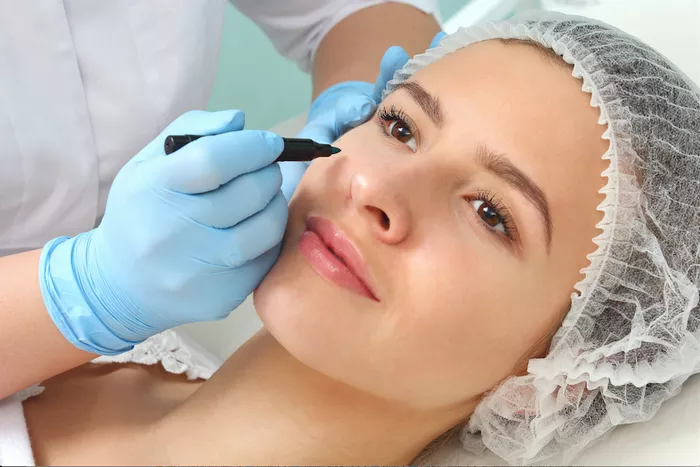Non-surgical cosmetic procedures have revolutionized the world of aesthetics, offering individuals various options to enhance their features without the need for surgery. One such popular treatment is nose filler, a technique that uses injectable dermal fillers to reshape and enhance the nose’s appearance. As people consider nose filler options, questions arise about which filler is best for achieving their desired results. In this article, we will explore the different types of fillers used for nose augmentation, the factors that influence filler selection, and considerations for individuals seeking this non-surgical enhancement.
Understanding Nose Filler
Nose filler, also known as non-surgical rhinoplasty or liquid rhinoplasty, involves the injection of dermal fillers into specific areas of the nose to reshape, enhance, or correct imperfections. This procedure is particularly appealing to individuals seeking subtle changes to their nose without undergoing surgery. Nose filler can address concerns such as a dorsal hump, a drooping nasal tip, asymmetry, or minor irregularities.
Types of Fillers Used for Nose Augmentation
Several types of dermal fillers are commonly used for nose augmentation:
Hyaluronic Acid (HA) Fillers: HA fillers are made of a naturally occurring substance found in the skin. They are highly versatile and can be used to add volume, smooth wrinkles, and enhance contours. Popular HA fillers for nose augmentation include Restylane, Juvéderm, and Belotero.
Calcium Hydroxylapatite Fillers: These fillers contain calcium particles suspended in a gel base. They stimulate collagen production and provide longer-lasting results. Radiesse is a commonly used calcium hydroxylapatite filler for nose enhancement.
Polymethyl Methacrylate (PMMA) Fillers: PMMA fillers contain tiny PMMA microspheres suspended in a gel. They provide long-lasting results and stimulate collagen production. Bellafill is an example of a PMMA filler used for nose augmentation.
Poly-L-Lactic Acid (PLLA) Fillers: PLLA fillers stimulate collagen production and gradually enhance volume. Sculptra is a PLLA filler that can be used to improve the appearance of the nose over time.
Factors Influencing Filler Selection
The choice of filler for nose augmentation is influenced by several factors:
Desired Outcome: The specific concerns and goals of the individual seeking treatment play a significant role in filler selection.
Duration of Results: Different fillers have varying durations of effectiveness. Some last several months, while others can provide results for up to two years or more.
Type of Concern: The type of concern being addressed, such as volume loss, contour irregularities, or nasal asymmetry, can guide filler selection.
Skin Thickness: The thickness of the individual’s skin and underlying nasal anatomy can affect how the filler integrates and provides desired results.
Practitioner’s Expertise: A skilled and experienced practitioner will determine the most suitable filler based on the individual’s unique needs.
Benefits of Nose Filler
Nose filler offers several benefits:
Non-Surgical: Nose filler is a non-surgical option for enhancing the nose’s appearance, making it appealing to those who wish to avoid surgery.
Quick Procedure: The procedure is relatively quick, often taking less than an hour, with minimal downtime.
Immediate Results: Results are visible immediately after the procedure, although some swelling may be present initially.
Subtle Enhancements: Nose filler allows for subtle changes to the nose’s appearance, providing a more balanced and harmonious facial profile.
Reversible: In most cases, HA fillers are reversible using an enzyme called hyaluronidase if the individual is not satisfied with the results.
Considerations Before Undergoing Nose Filler
Consultation: A thorough consultation with a qualified and experienced practitioner is essential to discuss goals, expectations, and any potential risks.
Realistic Expectations: Individuals should have realistic expectations about what nose filler can achieve. Significant changes might require surgical rhinoplasty.
Temporary Nature: While results are long-lasting, they are not permanent, and repeat treatments will be necessary to maintain the desired appearance.
Potential Risks: Like any medical procedure, there are potential risks associated with nose filler, including bruising, swelling, infection, or vascular complications.
Practitioner Selection: Choosing a reputable and experienced practitioner is crucial for achieving safe and satisfactory results.
Conclusion
Nose filler offers a non-surgical and minimally invasive approach to enhancing the appearance of the nose. The choice of filler depends on individual goals, the type of concerns being addressed, and the practitioner’s expertise. While nose filler provides immediate results and subtle enhancements, individuals should approach the procedure with realistic expectations and carefully select a qualified practitioner. By understanding the options available and considering the factors that influence filler selection, individuals can confidently explore nose filler as a means to achieve their desired aesthetic goals and enhance their overall facial harmony.


